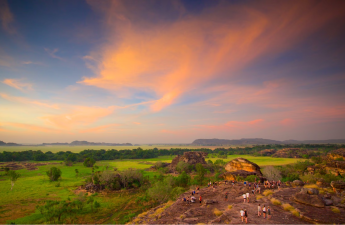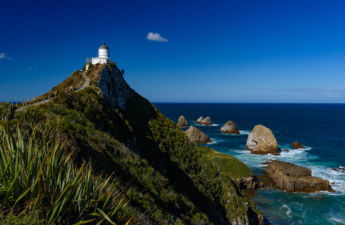The Grampians National Park, known for its breathtaking mountain ranges, rich cultural history, and diverse wildlife, is a jewel in the crown of Australian natural beauty. Situated in Victoria and offering a plethora of outdoor activities, the park is a sanctuary for adventurers, nature lovers, and culture enthusiasts alike. Renowned for its awe-inspiring hiking trails, indigenous heritage, and captivating flora and fauna, the Grampians hold a prestige that resonates far beyond its geographic boundaries. In this article, we delve into why the Grampians is celebrated not only as a traveler’s paradise but also as a significant cultural and natural preserve.
Introduction to the Grampians National Park

Set in the heart of Victoria, the Grampians National Park is an outdoor sanctuary that promises an unforgettable experience with nature. Its spectacular craggy cliffs, vibrant wildflower displays, and panoramic views make it a must-visit destination. Whether you’re embarking on a grueling hike to the Pinnacle or simply enjoying the tranquility of the park, the Grampians cater to all. Adding to its allure is the ease of access, with the option to join a guided grampians tour, thereby ensuring visitors fully appreciate the park’s offerings.
The Rich Aboriginal Heritage of the Grampians
The Grampians, or Gariwerd as it is known by the local Indigenous people, holds a deep spiritual significance that spans tens of thousands of years. The park’s numerous rock art sites, some of which are among the oldest in the world, provide a window into the past and showcase the rich narrative of Australia’s First Peoples. These ancient depictions are a testament to the enduring cultural connection the Aboriginal community has with this region, with sites such as Bunjil’s Shelter bringing myth and legend to life.
The Diverse Flora and Fauna of the Grampians
The Grampians is a biodiversity hotspot, harboring an array of plant and animal species within its varied ecosystems. From spring’s vibrant wildflowers to the rare orchids hidden within its forests, the park is a botanist’s dream. The fauna is equally impressive, with species like the elusive Brush-tailed Rock-wallaby and the majestic wedge-tailed eagle calling the park home. For nature enthusiasts, the Grampians presents an opportunity to encounter wildlife in their natural habitat while contributing to their preservation.
Majestic Landscapes and Scenic Beauty
Known for its majestic sandstone mountains that rise abruptly from the earth, the Grampians offers some of the most picturesque landscapes in Australia. Lookout points such as the Balconies reveal vistas that stretch seemingly into infinity, with the golden hue of sunset providing a dramatic backdrop. Each season brings a different aspect of beauty, from waterfalls cascading in full force after rain to the tranquil ambience of the snow-dusted peaks in winter.
Outdoor Adventure and Activities in the Grampians
For those seeking adventure, the Grampians is a veritable playground. The region boasts a vast network of trails, catering to both leisurely walkers and seasoned hikers. Activities like rock climbing and abseiling attract thrill-seekers from around the globe. Here’s what you can look forward to:
- Challenging rock-climbing routes on Mount Stapylton.
- Tranquil canoeing on Lake Bellfield.
Grampians’ Local Culture and Wine Region
The Grampians also shines through its local cultural scene and well-established wine region. The area’s local festivals offer a taste of Australian hospitality, with events such as the Grampians Grape Escape being a highlight for food and wine aficionados. The region’s cool climate wines, particularly its robust Shiraz and delicate Riesling, have garnered international acclaim, urging visitors to embark on a grampians tour of the vineyards.
Accommodations and Amenities for Visitors
When it comes to staying in the Grampians, there’s an array of options to suit any preference or budget. From cozy bed and breakfasts to high-end resorts, your stay in the Grampians can be as rustic or as luxurious as you desire. Visitor facilities are plentiful, ensuring a comfortable and convenient visit. Below is a table outlining typical accommodations you might find:
| Type of Accommodation | Location | Price Range |
|---|---|---|
| Camping Grounds | Park Vicinity | $ |
| Hostels | Nearby Towns | $-$$ |
| Bed & Breakfasts | Various | $$-$$$ |
| Luxury Resorts | Scenic Locations | $$$-$$$$ |
Conclusion
In conclusion, the Grampians National Park is renowned for its stunning landscapes, rich aboriginal heritage, abundant wildlife, robust outdoor activities, cultural experiences, and its acclaimed wine region. It is a destination that offers something for everyone and leaves lasting memories. The region’s diverse attractions, coupled with its hospitable amenities, make the Grampians a world-famous destination worthy of any travel itinerary.
FAQs About the Grampians National Park
Before planning your visit, here are a few commonly asked questions to help you prepare for your adventure:
- 1. What is the best time of year to visit the Grampians?
- The optimal time to visit is during spring and autumn when the weather is pleasant, and the natural scenery is at its best.
- 2. Are there any entry fees for the Grampians National Park?
- Access to the park itself is free, but certain activities may require a fee.
- 3. How can tourists learn about the Aboriginal history of the Grampians?
- Visitors can explore aboriginal history through the Brambuk National Park and Cultural Centre or by joining a guided cultural tour.
- 4. Can you recommend a hiking trail for first-time visitors to the Grampians?
- The Pinnacle offers an accessible trail with stunning views, perfect for those new to the Grampians.
- 5. Are there any endangered species in the Grampians National Park to be aware of?
- Visitors should be mindful of endangered species such as the Brush-tailed Rock-wallaby and follow guidelines to support conservation.


